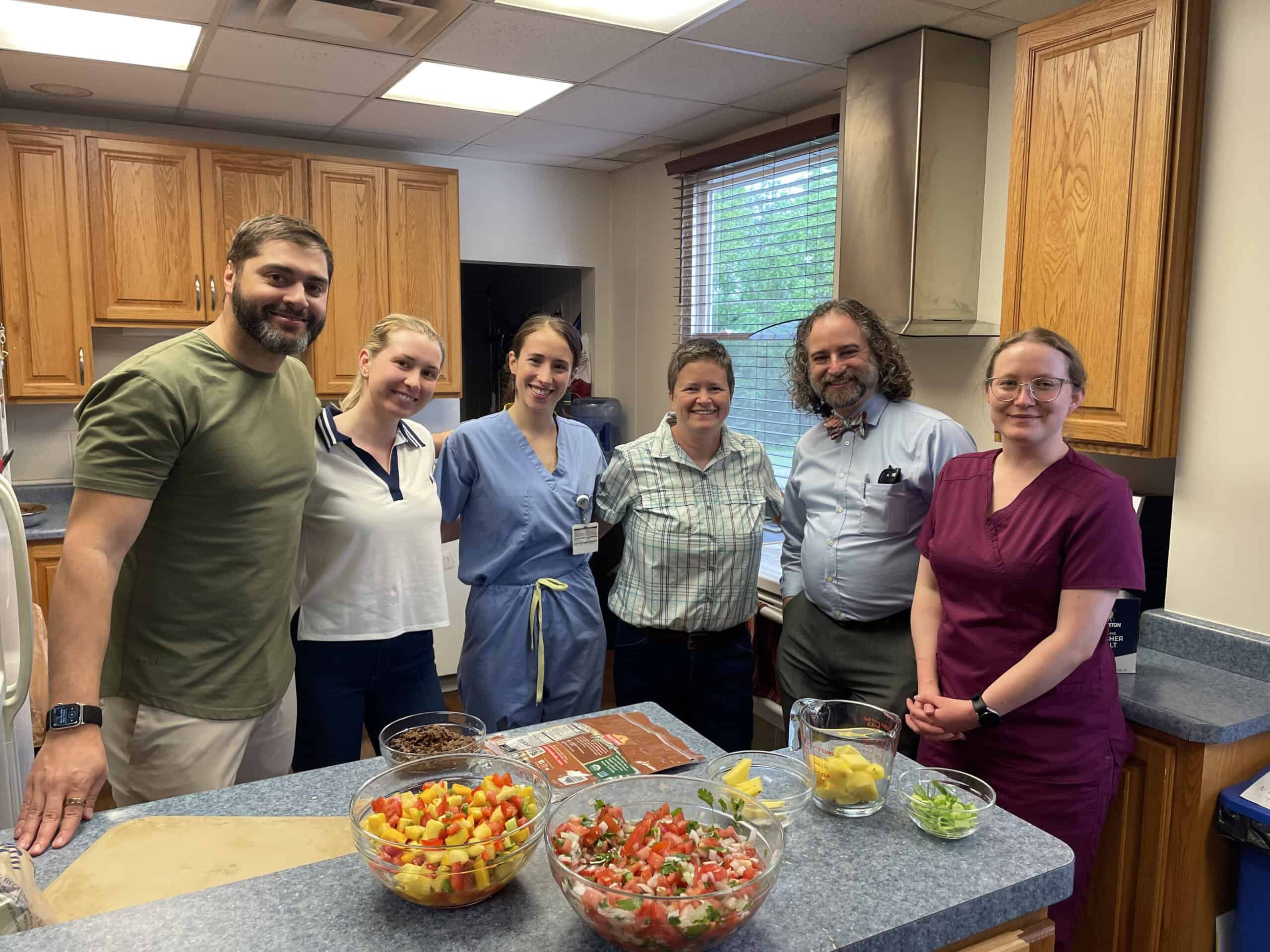Rural Health
Want to learn more about this at Kettering Health?
Depictions of life in rural communities often focus on small towns, safe streets, and happy, healthy families. However, compared to those residing in urban areas, people living in rural communities are at greater risk of dying prematurely from the leading causes of death in the United States, including heart disease, cancer, stroke, and lung disease.
At the root of these alarming geographic health disparities? Access to care.
“There is a shortage of quality primary care in rural communities,” says Dr. J. Wes Halderman, associate program director for the Soin Family Medicine Residency. “It’s not the only thing that contributes to poor health outcomes in rural areas, but it is certainly a factor.”
In addition to primary care, specialty care is seldom available in rural settings, as Katherine Kingseed, a physical therapist and the director of Outpatient Therapy at Kettering Health, can attest. “The need for neurologic physical therapy is growing in rural communities at rates healthcare facilities are struggling to keep pace with.”
Providers at Kettering Health are taking a unique approach to improve healthcare for rural populations: training the next generation of doctors in specialized residency programs.
A healthier start
In 2021, Soin Medical Center received a five-year, $1.9 million grant from the Health Resources and Services Administration (HRSA) to address rural healthcare needs.
“The grant centers on healthy families—starting with healthy maternity care and continuing to healthy family units,” says Dr. Laura Chambers-Kersh, lifestyle medicine lead for the Soin Family Medicine Residency. “During the initial years of the grant, the funding helped bring maternity care to women in rural areas, including outfitting a clinic with an ultrasound machine, training physicians and labor and delivery nurses, stocking clinics with obstetrical supplies, and more.”
The next phase of grant funding is dedicated to improving the health of families by educating community members on lifestyle management of chronic conditions through culinary medicine.
A strong foundation
“Nutrition plays such a vital part in our health, and poor nutrition contributes to leading causes of death in our country like heart disease and cancer,” says Dr. Chambers-Kersh. “Physicians traditionally receive less than 30 hours of nutrition-specific training. I think because we aren’t trained in it, we aren’t super confident bringing it up with patients.”
The Soin Family Medicine Residency team has developed a culinary medicine program where residents will teach a series of whole-food, plant-based classes to people living in rural areas. Classes will focus on instruction of budget-friendly recipes, tasting foods, and providing attendees with strategies to adopt this cooking style. The Cedarville Fire Department has opened its firehouse kitchen for classes, to help bring this health education directly to rural community members.
“The goal is to give residents and students more tools—we want doctors to be better equipped to provide a higher quality of care, and we want community members to learn strategies to live healthier lives,” says Dr. Halderman.
A continuum of care
The Kettering Health NeuroRehab and Balance Center (KHNRBC) is also committed to providing a higher quality of care to the adult and senior populations of Greater Dayton, treating acute and chronic neurologic and vestibular conditions.
“Many of our patients are dealing with balance issues, recovering from a stroke, or living with Parkinson’s disease, ALS, or multiple sclerosis, but a large majority of our patients are individuals who have suffered falls,” says Erika Rollyson, a physical therapist and the neurologic physical therapy residency coordinator at Kettering Health.
“There is a great need for neurologic physical therapy among patients living in rural areas whose diagnoses place basic mobility limitations on them—they struggle to get dressed, make a meal, or walk—let alone make a long commute for care,” says Katherine.
To address this need, KHNRBC pursued a grant from the Academy of Neurologic Physical Therapy. Funding is helping expand access to neurologic physical therapy in rural communities by introducing the first physical therapy residency program in the region. The one-year program will require residents to move through three clinical rotations at different Kettering Health medical centers, provide them with mentorship from highly skilled physical therapists, and prepare them to meet the growing need for care in rural areas.
“The vision is to bring highly skilled neurologic physical therapy care closer to our patients. This residency program brings us one step nearer to realizing it,” says Katherine.
From maternity care to the daily health of families to supporting aging populations, Kettering Health is making moves to bridge gaps in rural healthcare by training future providers to deliver care in these regions.
“It is my hope that our efforts will help our rural communities flourish,” says Dr. Halderman. “We just graduated our first two rural pathway physicians. Both are moving on to practice in rural Ohio.”
About Soin Family Medicine Residency
“Soin Family Medicine Residency focuses on offering a supportive environment to foster growth, compassion, and competency in team-based patient care,” says Dr. Courtney Stroble. “The rural track and affiliated programs reinforce the importance of outpatient clinics and the role of continuity of care in family medicine training and practice.”
- Soin Family Medicine Residency is a three-year program with 10 residents per class, for a total of 30 residents. Six residents (two per class) are on the rural pathways track.
- The neurologic physical therapy residency is a one-year program with one resident.










